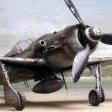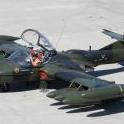Leaderboard
Popular Content
Showing content with the highest reputation on 05/31/2015 in all areas
-
2 points
-
This is somewhat Reserve/Guard-centric, but I thought it was worthy of general discussion. Over the last 10 years, I have watched with horror as the ANG has tried harder and harder to become like the active duty. Our leadership has yelled from the rooftops "We're just like active duty! We're an operational reserve, not strategic! Give us new equipment! Deploy us more!" Meanwhile.... The standard ANG AEF deployment has gone from 45 days to 180. ANG units are now being routinely tasked for non-voluntary, non-combat 90-120 day TSP deployments. And now it looks like the reserve component deploy to dwell ratio is in question. For many years, the RC's deploy to dwell ratio has been set at 1:5 vs. active duty's 1:2, which means that a 1-each fighter guy could expect to deploy 45 days roughly every 1 1/2 years. This was good living - and enticed many active duty brethren to come to greener pastures. Now Guard leadership is discussing reducing the Guard deploy to dwell to 1:3 (see article below). I'm wondering if the ANG is still being viewed as a good deal by those considering punching from AD. Are the incentives still there for an active duty bubba to join the Guard? Would you join the ANG knowing that a 180-day is right around the corner? Are the guys leaving AD going to the Reserves/Guard or are they getting out all together? I'm also interested in thoughts on the increasing Federalization of the ANG, which is supposed to be primarily a state organization. We are looking more and more like the active duty by the day. Is the Guard still the Guard? Will there be a time in the future when we are aligned so closely that the Guard is dissolved? Will ANG personnel (especially part-timers) endure the increase in ANG deployment length / ops tempo or will they start jumping ship for greener pastures (airlines)? Article Follows: The NGAUS president addressed the initial public hearing last week of the National Commission on the Future of the Army in Arlington, Va. Retired Maj. Gen. Gus Hargett offered five recommendations for the panel to consider. The eight-member panel was created by Congress to determine how the Army should look to meet coming threats. A major part of its charge is to determine the role of the reserve component, both the Guard and the Army Reserve. Its report is due to Congress Feb. 1, 2016. Also speaking was Maj. Gen. Edward W. Tonini, the Kentucky adjutant general and president of the Adjutants General Association of the United States. He told the panel the Army leadership feared the recommendations that would result from the commission's review of the Army. In 19 pages of written testimony presented to the commission one day earlier, Secretary of the Army John McHugh and Gen. Raymond T. Odierno, the Army chief of staff, called reserve-component cost-effectiveness a "myth." Also, retired Maj. Gen. Ray Carpenter, who served more than two years as acting director of the Army National Guard before retiring in 2011, has joined the staff of the panel as executive director. Here are summaries of the three presentations: The NGAUS president told the commission that the service can rely on an accessible Army National Guard for the foreseeable future. Hargett said, "I think we have created a culture in the Guard where they expect to be used." In his remarks and his written testimony, Hargett gave five recommendations for the panel to consider. They are: - Sustain the combat role of the Army National Guard as an integral part of our nation's first line of defense; - Sustain the personnel end strength of the Army National Guard; - Continue the operational employment of Army National Guard units in missions overseas to sustain a base of operational experience; - Assure the Army National Guard receives modern equipment in order to bolster interoperability with the active component; and - Shape the Army leadership culture to assure that senior leaders have Total Force experience. When Hargett was questioned about dwell time for citizen-soldiers and whether a ratio of one year of deployment every three years could be sustained, he said, "I think the answer is yes." Dwell time is an important issue because the commission is to take a close look at the Army's Aviation Restructure Initiative, which, among other things, would remove all AH-64 Apache helicopters from the Guard and put them in the active component. Studies that portray the Army's plan as a money-saver use a dwell time ratio for the Guard of one year mobilized in every five-year period, or 1:5. "I'm not opposed to ARI," the NGAUS boss told the commissioners. "I think ARI is a step in the right direction." However, he said, when a more realistic and attainable dwell-time ratio between deployments is used, such as 1:3, ARI saves more money by keeping Apache helicopters in the Guard. Hargett's full written testimony is available on the commission website at www.ncfa.ncr.gov. It can be found under Reading Room. Tonini told the panel that dwell times are often misleading, especially when applying a recent ratio of 1:5 to a time of a national emergency. The bottom line for him, he said, is that the Army Guard is ready whenever needed. "The Guard is accessible," the Kentucky adjutant general said. "All you have to do is ask. We've never said, 'No.'1 point
-
$200? Seems pretty high. Maybe I don't understand the issue, but at some point, you'll leave military flying and might have to take the CFI refresher every 2 years. Just sign up now, and do the American Flyers. It's a one time fee of $99, and you're done. Additionally, they will do your renewal for $25... not $200. I live 30 miles from my FSDO. The 60 mile roundtrip... have to make an appointment.... do the paperwork... etc... makes this $25 fee a no-brainer. So sure... you can go through the thrash of using your military IP creds to renew... or save yourself a lot of time and effort and just do it online.1 point
-
Problem is that people ARE going to walk away and find another job. You can't quickly replace the experience they walk away with by hiring someone off the street, so you end up with a less capable force and more guys are going to die in wartime and training accidents. Sport bitching is one thing, highlighting issues that will hurt our ability to safely execute the mission is another. Guys are bailing on AD to the guard to get family stability and be home more. If the guard goes to a 1:3 with 180 day rotations for fighter units (180 days are already happening), that will no longer be true and more guys will straight up separate. I already know multiple fighter guys who's fini flight on AD was their no shit fini flight because they saw the guard as more of the same. A 1:2 AD dwell time sucks, but for many guys that really ends up being more like 1:3 or 1:4 after skipping deployments due to PCS's, school, etc. That doesn't happen nearly as much for part timers, so they may actually end up deploying as much or more than their AD buddies. There's also the civilian job issue. Airlines and other companies may not be able to fire guys for deploying for six months every 18, but if that military guy is a private practice doctor, lawyer, or small business owner, who is going to force their clients to come back when they return? The active duty pilot exodus has begun, but if the guard and reserve isn't careful, the same might happen on that side in a few years.1 point
-
Kind of sounds like whining to be honest. Don't like less than a 1:5 dwell? Find another job. Supply/demand dictates everything, no one is entitled to sit here in a "good deal" lifestyle.1 point
-
1 point
-
Wait, are you saying a manned ISR asset can't find/fix/finish/exploit/provide POL/develop targets as well as an unmanned? I would beg to differ, if that is the case. I'm not disputing that the RPAs have their advantages...it basically comes down what capes you're looking for, but I've personally seen many scenarios where-in manned assets provided better target development.1 point
-
if you do get tapped for a SEF deployment, they have in the past attempted to put you at a location with your qual'd aircraft so you can continue to fly. If you are an 11HXX (RW only), you're excluded from consideration for safety deployments since the career field is critically manned and ops tempo is so high. Your MAJCOM manages the safety deployment buckets and tasks wings as appropriate to fill the requirements. I spent 1 yr as the SQ FSO, 1 yr as WG FSO, 1 yr at new duty station as SQ ADFSO (I was Chief of Training at the time), and 1.5 years as the WG Chief of Flight Safety. I dig safety. I have done 2 Class A SIBs (one as the Pilot Member, one as Investigating officer) and 2 Class B investigations as SIO. And of course too many to count Class C, D, and E investigations at my wings. If AFSEC was hiring right now on the GS side, I would be there in a heartbeat. Safety's not for everyone, and I'd ask you not to half-ass it if you do get the stink on you. It's something I care deeply about - I've lost several friends and family members over the years, and almost lost several others.1 point
-
I had a serious problem at home. Life got much better after I divorced her.1 point




